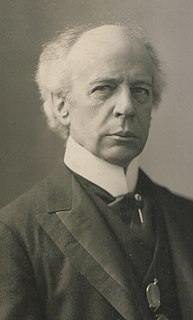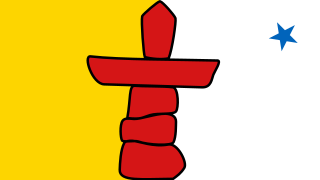
The provinces and territories of Canada are sub-national governments within the geographical areas of Canada under the authority of the Canadian Constitution. In the 1867 Canadian Confederation, three provinces of British North America—New Brunswick, Nova Scotia, and the Province of Canada —were united to form a federated colony, becoming a sovereign nation in the next century. Over its history, Canada's international borders have changed several times, and the country has grown from the original four provinces to the current ten provinces and three territories. Together, the provinces and territories make up the world's second-largest country by area.
National referendums are seldom used in Canada. The first two referendums saw voters in Quebec and the remainder of Canada take dramatically opposing stands, the third saw most of the voters take a stand dramatically opposed to that of the politicians in power.
Devolution is the statutory delegation of powers from the central government of a sovereign state to govern at a subnational level, such as a regional or local level. It is a form of administrative decentralization. Devolved territories have the power to make legislation relevant to the area.

The Canadian federal election of 1908 was held on October 26 to elect members of the House of Commons of Canada of the 11th Parliament of Canada. Prime Minister Sir Wilfrid Laurier's Liberal Party of Canada was re-elected for a fourth consecutive term in government with a majority government. The Liberals lost four seats and a small share of the popular vote.

Referendums in Australia are polls held in Australia to approve parliament-proposed changes to the Constitution of Australia or to the constitutions of states and territories. Polls conducted on non-constitutional issues are usually referred to as plebiscites.
The 1988 Australian Referendum was held on 3 September, 1988. It contained four referendum questions, none of which passed. The failure was generally attributed to the open ended and nondescriptive wording of the proposed amendments.

Calgary was a provincial electoral district in Alberta, Canada that existed from 1905 to 1913 and was recreated from 1921 to 1959. The district returned from one to six members to the Legislative Assembly of Alberta. The district largely encompassed the boundaries of the City of Calgary, and was revised accordingly as the city grew.

The history of Northwest Territories capital cities begins with the purchase of the Territories by Canada from the Hudson's Bay Company in 1869, and includes a varied and often difficult evolution. Northwest Territories is unique amongst the other provinces and territories of Canada in that it has had seven capital cities in its history. The territory has changed the seat of government for numerous reasons, including civil conflict, development of infrastructure, and a history of significant revisions to its territorial boundaries.

The history of Canada (1992–present) refers to the period immediately following the end of the Cold War, until present.
The region now known as Nunavut has supported a continuous population for approximately 4000 years. Most historians also identify the coast of Baffin Island with the Helluland described in Norse sagas, so it is possible that the inhabitants of the region had occasional contact with Norse sailors.

Nunavut Day is a public holiday in the Canadian territory of Nunavut.
A plebiscite on the boundary between Northwest Territories and the new territory of Nunavut was held in the Northwest Territories on 4 May 1992. The proposed border was approved by 54% of voters. A second referendum later in the year gave the final approval to the creation of the new territory.
A referendum on the creation of the territory of Nunavut was held between 3 and 5 November 1992 in the territory set to become the new territory. It was approved by 69% of voters. On 25 May 1993 the Mulroney government and the TFN signed the Nunavut Agreement. On 10 June 1993 the federal Parliament passed two laws dividing the Northwest Territories and providing for the formation of Nunavut on 1 April 1999.
A referendum is a direct vote in which an entire electorate is asked to either accept or reject a particular proposal. This article summarises referendum laws and practice in various countries.
A referendum on the political status of Puerto Rico was held in Puerto Rico on June 11, 2017. The referendum had three options: becoming a state of the United States, independence/free association, or maintaining the current territorial status. Those who voted overwhelmingly chose statehood by 97%; turnout, however, was 23%, a historically low figure. This figure is attributed to a boycott led by the pro-status quo PPD party.







